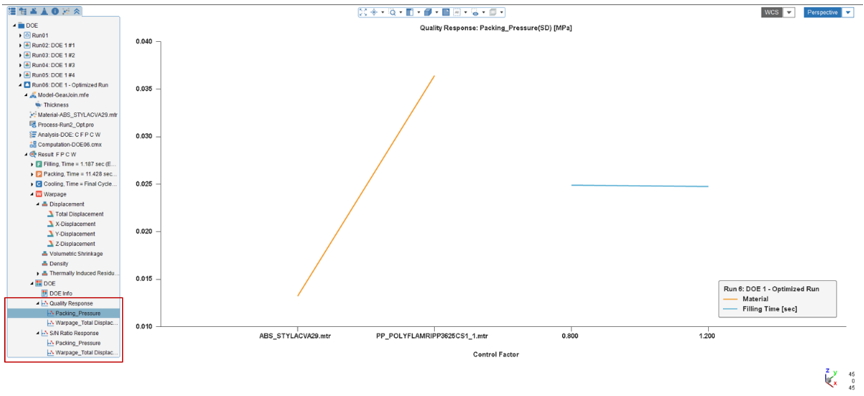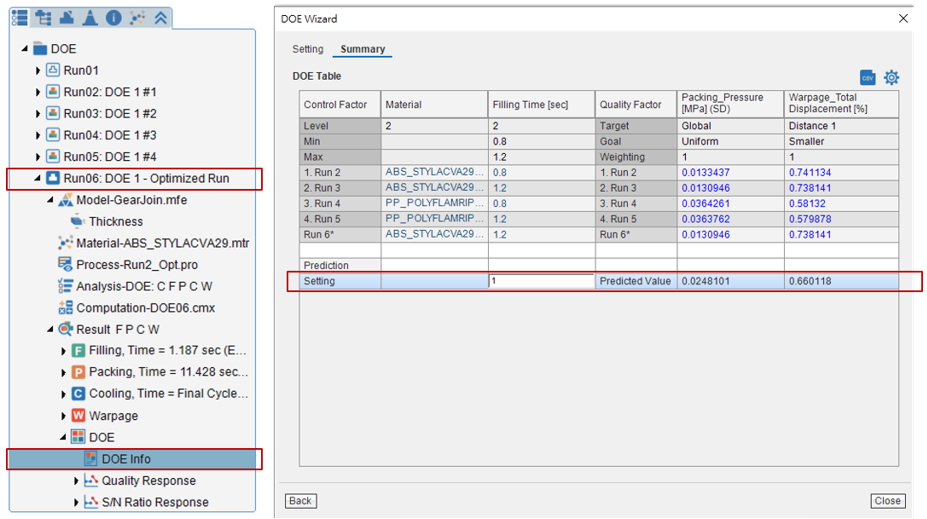 |
Cindy Teng, Engineer at Technical Support Division, Moldex3D |
During plastic molding, many process parameters and conditions dominate the quality and performance of the final product. The DOE method in Moldex3D Studio helps designers analyze different molding parameters, including part designs, material selections and process conditions, in a more effective way.
Moldex3D’s DOE Wizard now supports more Control Factors, including mesh and material, and Quality Factors. Apart from injection molding, designers can also apply DOE method in other process types such as IC encapsulation. With diversified control and quality factors, users can easily optimize the procedure in DOE Wizard.
Step 1. Get started
Prepare a base run and finish all the settings including model, material, process, analysis and computation. Right click on the run and select New DOE to launch the DOE Wizard.
Note: The Moldex3D DOE feature supports injection molding, powder injection molding and IC packing processes.
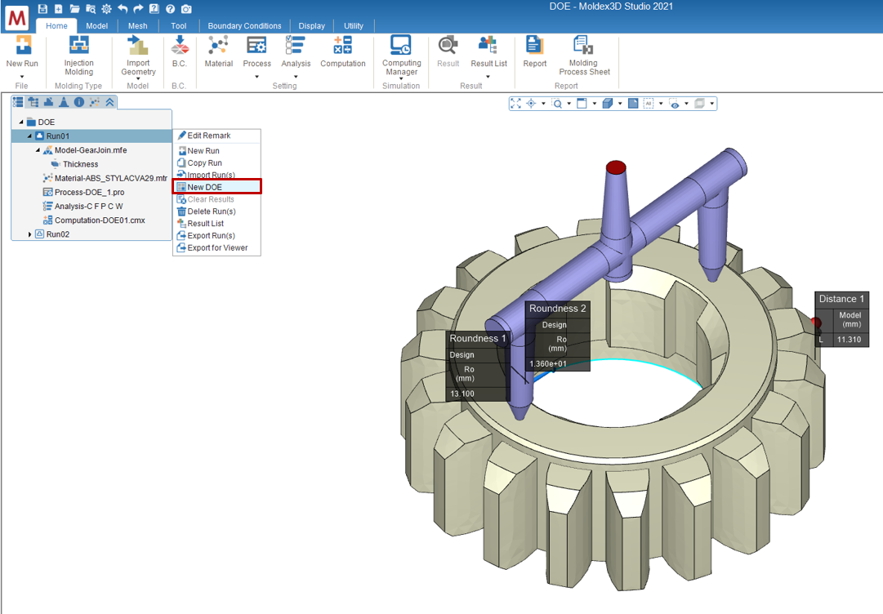
Step 2. Analysis Sequence Setting
In the DOE Wizard, there will be the preset of Base Run and Analysis Sequence in the DOE Information depending on the active run launched, so one can keep the settings unless changes are needed. In the DOE Method, in this case for demonstration, define the DOE runs with 2 Levels of 2 Control Factors by L4(23) Taguchi Array.
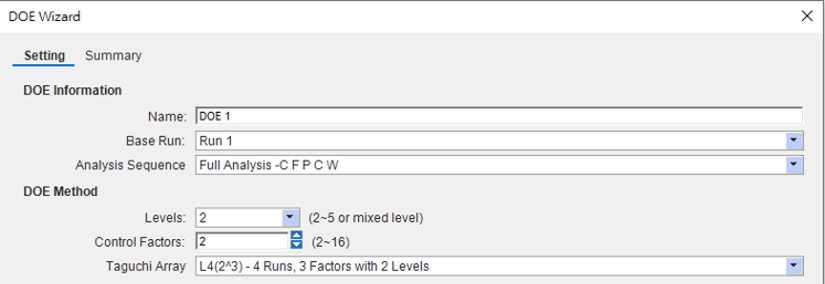
Step 3. Control & Quality Factors
Control Factors are the parameters to be optimized, and Level is the variation of them (range and Resolution). In this case, specify Material (ABS & PP) and filling time (0.8~1.2) as the control factors.
Quality Factors define the goal of optimization. In this case, specify Packing Pressure (Target: Global; Goal: Uniform) and Warpage_ Total Displacement (Target: Distance1; Goal: Smaller) as quality factors, and set Weighting of 1 for both (meaning equally important).
Note: Since Moldex3D 2021, it supports Mesh & Material files as Control Factors. Also, the Warpage_ Total Displacement feature supports the Target of Measurement items (Roundness, Flatness, Distance) as Quality Factors.
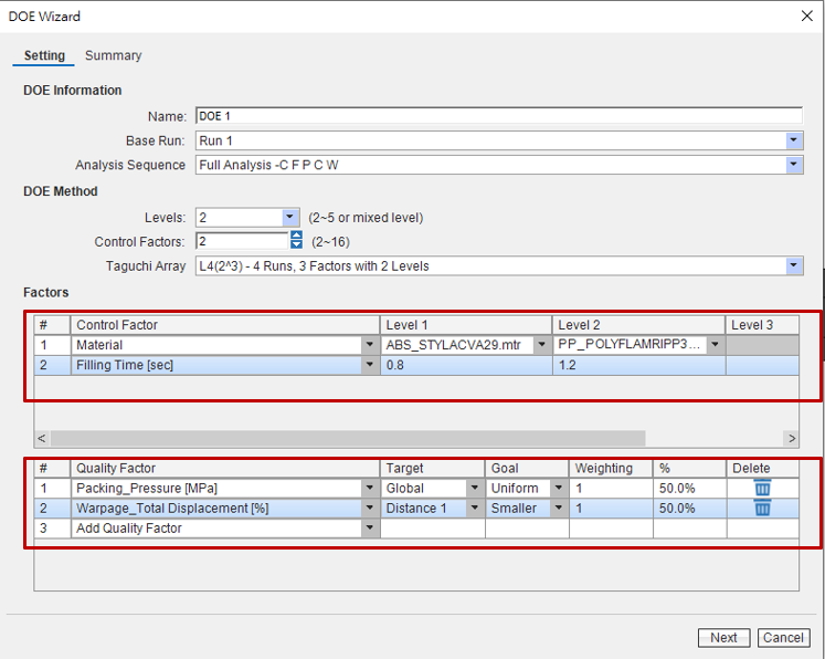
Step 4. Create DOE Runs
After all the settings completed, click Next to view the DOE Table and click Create to confirm and generate DOE runs, including Optimized Run. Submit all DOE runs for calculation and then Optimized Run will have the best results according to Quality Factors obtained in other runs.
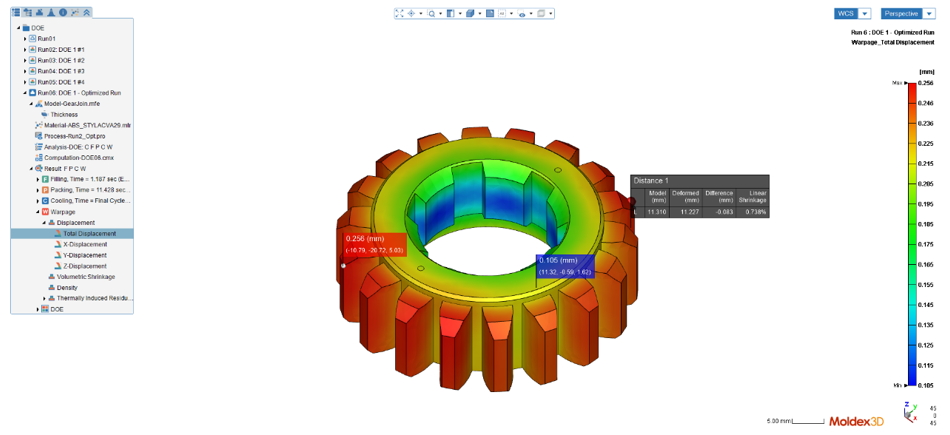
Under DOE result in Optimized Run, one can select to show Quality Response and S/N Ratio Response or click DOE Info to open DOE Wizard again for the summary of all DOE runs and their Quality Factors. Users can enter different value of Control Factors below to predict Quality Factors with different setting.
